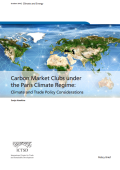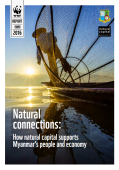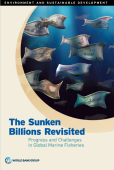
China’s introduction of a national ETS, scheduled for 2017, is an important development in the expanding carbon market landscape. As countries move towards implementation of the recently-adopted Paris Agreement, this sends a powerful signal about China’s mitigation commitment and support for carbon markets. As the largest emitter of greenhouse gases and a key player in world trade, China’s move to a nation-wide ETS can have significant implications for the future of carbon markets around the world.

The United Nations 2030 Agenda for Sustainable Development, adopted in September 2015, includes Sustainable Development Goals with respect to climate change (SDG 13) and to ensuring access to sustainable energy (SDG 7). Questions of mitigation and adaptation to climate change are furthermore integrated throughout the Agenda. This think piece explores how trade rules, in particular, those established at the multilateral level, could support progress towards the 2030 Agenda’s objectives related to climate change and clean energy.
The authors focus on six key policy challenges at the intersection of trade policy and climate change and clean energy. They recommend prioritising policy actions in three areas: fossil fuel subsidies; clean energy subsidies; and access, dissemination, and transfer of climate-friendly technologies. The authors also suggest policy actions to tackle three other important issues: dealing with the political economy of local content requirements; pricing carbon nationally while tackling international competitiveness and carbon leakage concerns, and designing “carrots” and “sticks” for more ambitious action under climate clubs.

Carbon markets are expected to continue to play a key role in the mitigation effort under the Paris Climate Agreement. Cooperation in carbon market clubs can help reduce competitiveness and carbon leakage concerns, which has the potential to incentivise the uptake of more and increasingly ambitious carbon markets. This policy brief assesses the potential for carbon market clubs in light of the Paris Agreement and recently launched carbon market initiatives from a climate and trade policy perspective. It shows that additional efforts will be needed within and outside the UNFCCC for carbon market clubs to emerge and explores the challenges and opportunities the trade system may pose in this regard.

Myanmar’s natural assets – including its forests, soils and coastal waters and the biodiversity they embody – makes up its natural capital, providing critical benefits to the Myanmar people.
Benefits are helping to protect them against natural hazards and ensuring reliable sources of clean water for drinking and irrigation as well as opportunities for ecotourism. The assessment presented in this report shows where and how Myanmar’s natural capital contributes to clean and reliable drinking water sources, reduced risks from floods inland and storms along the coasts, and to maintaining the functioning of reservoirs and dams by preventing erosion. The results highlight areas that provide high levels of ecosystem services, where natural capital provides the greatest benefits to people and infrastructure. The natural capital assessment provided here can support development and management decisions that launch Myanmar on a more sustainable and inclusive path toward economic development.

Global marine fisheries are in crisis. The proportion of fisheries that are fully fished, overfished, depleted, or recovering from overfishing increased from just over 60 percent in the mid-1970s to about 75 percent in 2005 and to almost 90 percent in 2013. Biological overfishing has led to economic overfishing which creates economic losses. To quantify the value of this economic loss, in 2009 the World Bank and the Food and Agriculture Organization of the UN (FAO) published a study on the economic performance of global fisheries, The Sunken Billions: The Economic Justification for Fisheries Reform.
